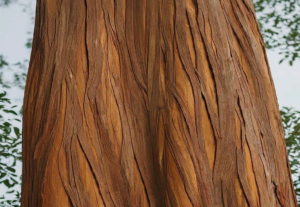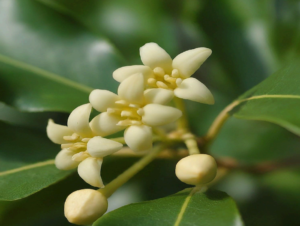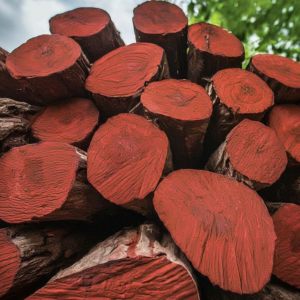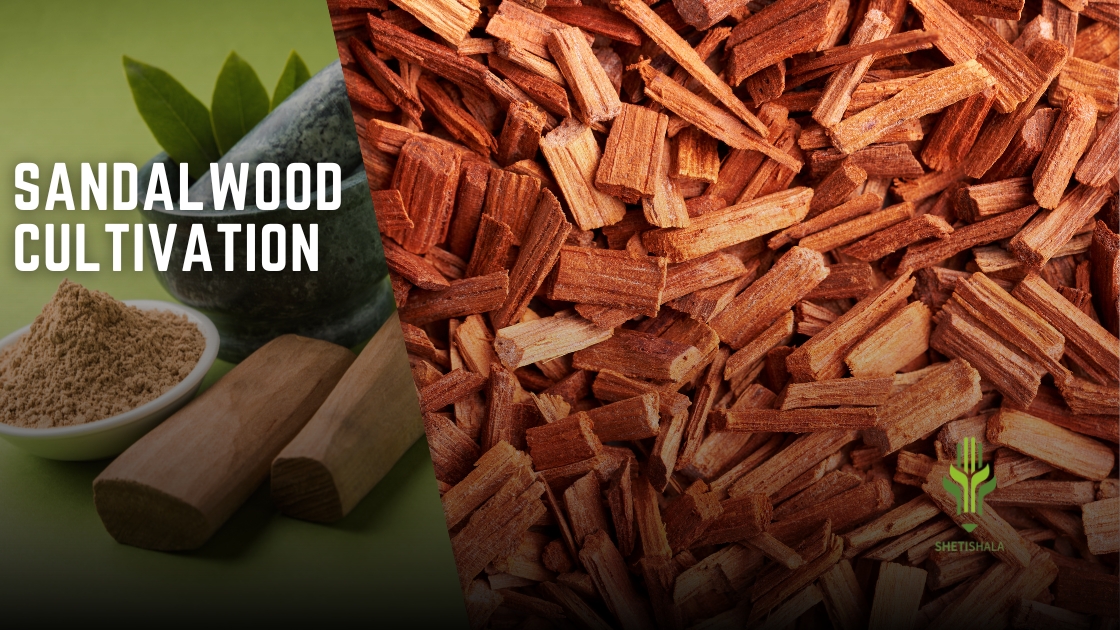1.INTRODUCTION TO SANDALWOOD
Explore the complete guide to sandalwood cultivation and unlock the potential of this valuable tree. Learn about the ideal climate, soil conditions, and planting techniques required for successful growth. Discover insights on sustainable farming practices, pest control, and optimal harvesting methods to maximize yield. This blog also covers legal regulations surrounding sandalwood farming, making it easier for you to navigate the cultivation process. Whether you are a beginner or an experienced farmer, find everything you need to know about the profitability, care, and long-term benefits of growing sandalwood for commercial purposes in this blog written by Anuja Palkar.

1.1 What is Sandalwood?
Sandalwood refers to the class of woods from trees in the genus Santalum. These
woods are known for their aromatic properties, with a rich, warm, and woody
fragrance that has been cherished for centuries. The essential oil extracted from
sandalwood is used in perfumes, cosmetics, and as a natural remedy in traditional
medicine.
General Characteristics
● Genus and Family:
○ Belong to the genus Santalum.
○ Part of the Santalaceae family.
● Growth Habit:
○ Semi-parasitic: Sandalwood trees attach their roots to the roots of other host
plants to obtain nutrients, although they can photosynthesize on their own.
○ Evergreen trees or large shrubs.
● Height and Size:
○ Typically grow between 10 to 15 meters (33 to 49 feet) in height.
○ Can sometimes reach up to 20 meters (66 feet) under optimal conditions.
● Leaves:

The leaves are evergreen, leathery, and arranged in opposite pairs on the stem. They are typically ovate to lanceolate in shape, with a smooth, glossy surface and a bright green topside. The underside can be pale green or glaucous (waxy and bluish-green).
● Bark:

The bark of a sandalwood tree is initially smooth and reddish-brown or dark brown in color. As the tree matures, the bark becomes rougher with deep vertical cracks, revealing a red inner layer.
● Flowers:

Sandalwood flowers are small and inconspicuous, usually purplish-brown color and unscented.
● Growth rate:
Sandalwood is a slow-growing tree, which is one of the reasons why it is so valuable. It can take decades for a sandalwood tree to reach maturity and produce enough heartwood to be commercially viable.
● Wood:
The most prized part of the sandalwood tree is the heartwood. This is the central part of the tree that has a distinctive yellow-brown color, a fine, close grain, and a strong, woody fragrance. The heartwood is what is used to produce sandalwood oil and other sandalwood products.
● Habitat:
True sandalwood trees are indigenous to tropical and subtropical
regions of India, Southeast Asia, and Australia.
1.2 History and Cultural Significance
Sandalwood has a deep-rooted history and is revered in various cultures around the world.
It has been used in religious ceremonies, traditional medicine, and as a symbol of purity
and spirituality. In Hindu and Buddhist traditions, sandalwood is used in rituals and for
carving deities. In ancient Egypt, it was used in the embalming process. The wood and its oil
have also been traded as precious commodities, reflecting their value across different
civilizations.
1.3 Type of Sandalwood
White Sandalwood (Santalum album)
White Sandalwood, also known as Indian Sandalwood, is renowned for its high-quality essential oil and rich, creamy fragrance. This type of sandalwood is native to India and parts of Southeast Asia. It has been used for centuries in religious ceremonies, traditional medicine, and perfumery.

● Characteristics:
○ Light yellowish-brown wood.
○ Rich, long-lasting fragrance.
○ High oil content, making it valuable
for essential oil extraction.
● Uses:
○ Perfumes and fragrances.
○ Skincare products.
○ Religious rituals and incense.
○ Carving and decorative items.
Red Sandalwood (Pterocarpus santalinus).
Red Sandalwood, also known as Raktachandan or Red Sanders, is different from White Sandalwood and is not as aromatic. It is primarily valued for its deep red color and is used more for its wood than its scent.

● Characteristics:
○ Deep reddish-brown wood.
○ Mild fragrance, not as strong as White Sandalwood.
○ Dense and durable.
● Uses:
○ Traditional medicine, especially in Ayurveda for its believed cooling properties.
○ Dye and coloring agent in textiles and cosmetics.
○ Woodworking and furniture.
○ Musical instruments and ornamental carvings.
Other Types of Sandalwood
1. Australian Sandalwood (Santalum spicatum)
○ Milder scent compared to Indian Sandalwood.
○ Used in commercial products and sustainable harvesting.
2. Hawaiian Sandalwood (Santalum paniculatum)
○ Sweet and gentle aroma.
○ Harvested sustainably in Hawaii.
3. Pacific Sandalwood (Santalum austrocaledonicum)
○ Found in New Caledonia and Vanuatu.
○ Aromatic oil with a unique scent profile.
4. African Sandalwood (Osyris lanceolata)
○ Substitute for true sandalwood.
○ Similar but less intense fragrance.
2.Cultivation and Harvesting
2.1 Growing Conditions
Climate:
● Sandalwood trees thrive in tropical and subtropical climates.
● They prefer regions with moderate to high temperatures, ranging from 12°C to 35°C
(54°F to 95°F).
● Optimal rainfall is between 600 mm to 1600 mm annually.
Soil:
● Well-drained, sandy loam soils are ideal.
● Soil pH should be neutral to slightly acidic, around 6.0 to 7.5.
● Sandalwood trees are somewhat tolerant of poor soils but prefer fertile conditions for optimal growth.
Sunlight:
● Require full sun to partial shade.
● Adequate sunlight is crucial for the healthy growth of sandalwood trees.
Watering:
● Young trees need regular watering until they are established.
● Mature trees are drought-tolerant but benefit from occasional watering during prolonged dry periods.
Root System:
● Semi-parasitic roots that attach to the roots of host plants to obtain additional
nutrients and water.
● Common host plants include legumes, which can fix nitrogen and improve soil
fertility.
2.2 Sustainable Farming Practice
Intercropping:
● Planting sandalwood alongside compatible host plants such as legumes, shrubs, or
grasses.
● This practice enhances soil fertility, reduces the need for chemical fertilizers, and
supports the parasitic nature of sandalwood roots.
Agroforestry:
● Integrating sandalwood cultivation with other agricultural practices.
● Promotes biodiversity, soil health, and sustainable land use.
Organic Farming:
● Avoiding synthetic fertilizers and pesticides.
● Using organic compost, mulching, and natural pest control methods.
Water Conservation:
● Implementing efficient irrigation techniques like drip irrigation to minimize water
usage.
● Mulching around the base of trees to retain soil moisture.
Soil Management:
● Regularly testing soil to monitor and maintain optimal pH and nutrient levels.
● Adding organic matter to improve soil structure and fertility.
2.3 Harvesting Methods of Sandalwood

Timing:
○ Sandalwood trees typically reach maturity and are ready for harvest after 15 to 20 years.
○ The optimal time for harvesting is when the heartwood has fully developed, which is indicated by the rich color and strong aroma.
Selective Harvesting:
○ Carefully selecting mature trees for harvest to ensure sustainability.
○ Leaving younger trees and saplings to continue growing and maintaining the forest ecosystem.
Manual Harvesting:
○ Cutting down the tree at the base and removing the branches and leaves.
○ Extracting the heartwood from the trunk and larger branches, which contains the highest concentration of aromatic oil.
Processing:
○ The harvested heartwood is cleaned and then either ground into powder or
distilled to extract the essential oil.
○ The distillation process involves steaming the wood to release the oil, which
is then collected and purified.
Replanting:
○ Planting new sandalwood saplings to replace the harvested trees.
○ Ensuring continuous cultivation and maintaining the ecological balance.
3.Uses of Sandalwood
3.1 Traditional Uses
1. Religious and Spiritual Practices:
○ Sandalwood paste and powder are commonly used in Hindu and Buddhist rituals.
○ It is applied on the forehead during religious ceremonies and meditation for its calming and purifying properties.
○ Used in making sacred idols, temple doors, and religious artifacts.
2. Traditional Medicine:
○ Employed in Ayurvedic and Chinese medicine for its therapeutic properties.
○ Used to treat skin conditions, digestive issues, and respiratory problems.
○ Known for its anti-inflammatory, antiseptic, and astringent properties.
3. Incense:
○ Burned as incense during prayers and meditation.
○ Believed to purify the environment, enhance concentration, and create a peaceful ambiance.
3.2 Modern Applications
1. Perfumes and Fragrances:
○ Sandalwood essential oil is a prized ingredient in high-end perfumes and
colognes.
○ Provides a long-lasting, woody base note that blends well with other floral
and spicy scents.
○ Used in both men’s and women’s fragrances for its warm, exotic aroma.
2. Skincare and Cosmetics:
○ Incorporated into lotions, creams, and facial masks for its soothing and
anti-inflammatory effects.
○ Helps in treating acne, eczema, and other skin conditions.
○ Used in soaps, shampoos, and hair oils for its moisturizing properties and
pleasant fragrance.
3. Aromatherapy and Wellness:
○ Essential oil is used in aromatherapy for its calming and relaxing effects.
○ Added to diffusers, massage oils, and bath products to alleviate stress and
anxiety.
○ Believed to improve mental clarity, focus, and overall well-being..
4.Health Benefits of Sandalwood
4.1 Antimicrobial Properties
1. Antibacterial:
○ Sandalwood oil has potent antibacterial properties that help combat various
bacterial infections.
○ Effective against bacteria such as Staphylococcus aureus and Escherichia coli,
which can cause skin infections and other health issues.
○ Often used in topical applications to prevent and treat acne, wounds, and
cuts.
2. Antifungal:
○ The oil exhibits antifungal activity, making it useful in treating fungal
infections such as athlete’s foot, ringworm, and other skin conditions.
○ Helps in maintaining healthy skin by preventing fungal growth.
3. Antiviral:
○ Sandalwood oil has been found to possess antiviral properties, which can
help protect against viral infections.
○ Useful in aromatherapy to bolster the immune system and support overall
health.
4. Antiseptic:
○ Applied to minor cuts, scrapes, and insect bites to prevent infection and
promote faster healing.
○ Used in mouthwashes and dental products for its ability to reduce oral
bacteria and freshen breath.
4.2 Anti-inflammatory Effects
1. Reducing Inflammation:
○ Sandalwood oil has strong anti-inflammatory properties that help reduce
inflammation in the body.
○ Used to treat inflammatory skin conditions such as eczema, psoriasis, and
dermatitis.
○ Effective in alleviating redness, swelling, and irritation.
2. Soothing Skin:
○ Applied topically to soothe sunburns, rashes, and other skin irritations.
○ Provides a cooling effect that helps calm inflamed skin.
3. Pain Relief:
○ Used in massage oils to relieve muscle pain, joint pain, and arthritis.
○ The anti-inflammatory properties help in reducing pain and discomfort.
4. Respiratory Benefits:
○ Inhalation of sandalwood oil can help reduce inflammation in the respiratory
tract.
○ Beneficial for conditions like bronchitis, asthma, and other respiratory issues.
4.3 Mental Health and Relaxation
1. Stress Relief:
○ Sandalwood oil is widely used in aromatherapy for its calming and relaxing
effects.
○ Helps in reducing stress, anxiety, and tension by promoting a sense of peace
and tranquility.
○ Used in diffusers, bath products, and massage oils to create a relaxing
environment.
2. Improving Sleep:
○ The calming properties of sandalwood oil make it effective in promoting
restful sleep.
○ Used in bedtime routines, such as in pillow sprays, diffusers, and sleep
masks, to help induce sleep and improve sleep quality.
3. Mood Enhancement:
○ Sandalwood oil can uplift the mood and alleviate symptoms of depression.
○ Its soothing aroma helps in balancing emotions and enhancing overall
well-being.
4. Mental Clarity:
○ Enhances concentration and focus, making it useful during meditation, study,
or work.
○ Helps in grounding and centering the mind, promoting mental clarity and
cognitive function.
5. Aromatherapy Benefits:
○ Used in aromatherapy to create a sense of calm and well-being.
○ Helps in balancing the emotions and reducing mental fatigue.
5.Sandalwood Products and Buying Guide
5.1 Essential Oils
1. Extraction:
○ Sandalwood essential oil is extracted from the heartwood of the sandalwood tree through steam distillation.
○ High-quality essential oil comes from mature trees (at least 15-20 years old), which have a higher oil content and richer aroma.

2. Uses:
○ Aromatherapy: Diffused to promote relaxation, reduce stress, and enhance mood.
○ Skincare: Added to lotions, creams, and serums for its soothing and anti-inflammatory properties.
○ Massage: Blended with carrier oils for therapeutic massages.
○ Perfumes: Used as a base note in many high-end perfumes and colognes.
3. Buying Tips:
○ Look for 100% pure sandalwood essential oil without additives or fillers.
○ Check the botanical name (e.g., Santalum album for Indian sandalwood) to
ensure authenticity.
○ Opt for oils labeled as sustainably sourced or ethically harvested.
5.2 Incense and Powders
1. Incense:
○ Made from powdered sandalwood mixed with natural resins and binding
agents.
○ Used in religious ceremonies, meditation, and to create a calming
atmosphere.
2. Powders:
○ Finely ground sandalwood used in skincare, as a natural perfume, and in
traditional rituals.
○ Mixed with water or rosewater to make a paste for facial masks and
treatments.
3. Buying Tips:
○ Ensure incense sticks and powders are made from natural sandalwood and
not synthetic fragrances.
○ Look for products that are free from artificial colors and chemicals.
○ Consider the source and method of production to ensure ethical practices.
5.3 Skincare Products
1. Lotions and Creams:
○ Contain sandalwood oil for its moisturizing and anti-inflammatory benefits.
○ Suitable for sensitive and acne-prone skin due to its soothing properties.
2. Facial Masks and Serums:
○ Used for their calming and rejuvenating effects on the skin.
○ Often combined with other natural ingredients like turmeric, honey, and aloe vera.
3. Soaps and Shampoos:
○ Infused with sandalwood oil to provide a pleasant fragrance and gentle
cleansing.
○ Beneficial for dry and irritated skin and scalp.
4. Buying Tips:
○ Look for products with natural ingredients and avoid those with harsh
chemicals and synthetic fragrances.
○ Check for the presence of pure sandalwood oil in the ingredient list.
○ Choose products from reputable brands known for quality and ethical sourcing.
5.4 How To Choose Quality Sandalwood Products
1. Check the Source:
○ Authentic sandalwood products should come from reputable sources known
for producing high-quality sandalwood.
○ Indian sandalwood (Santalum album) is highly valued for its superior quality and aroma.
2. Read Labels and Certifications:
○ Look for labels indicating 100% pure sandalwood oil or natural sandalwood.
○ Certifications such as organic, sustainably harvested, and fair trade indicate
higher quality and ethical practices.
3. Evaluate the Price :
○ Genuine sandalwood products are often expensive due to the rarity and long
maturation period of the trees.
○ Be wary of products that are significantly cheaper than the average market price, as they may contain synthetic substitutes or diluted oils.
4. Test the Scent:
○ Pure sandalwood oil has a deep, woody, and long-lasting fragrance.
○ Synthetic or adulterated products may have a sharper or weaker scent.
5. Research the Brand:
○ Choose brands with positive reviews and a reputation for quality.
○ Check for transparency in sourcing and manufacturing practices.
6. Packaging:
○ Essential oils should be stored in dark glass bottles to protect them from light
and oxidation.
○ Skincare products should be sealed properly to maintain freshness and
prevent contamination.
Harvesting of Sandalwood
Regulatory Framework
1. Forest Conservation Act, 1980:
○ Governs the conservation of forests and regulates the diversion of forest
land for non-forest purposes.
○ Any activity involving sandalwood harvesting must comply with this act to
ensure the protection of forest resources.
2. Wildlife Protection Act, 1972:
○ Sandalwood is protected under this act due to its high economic value and
ecological importance.
○ Unauthorized harvesting and trade of sandalwood are considered illegal
under this legislation.
3. State-Specific Laws:
○ Each state in India has specific laws and regulations governing the sandalwood cultivation,
harvesting, and trade of sandalwood.
○ These laws can vary significantly, so it’s crucial to understand the local
regulatory framework in the state where you plan to harvest sandalwood.
Obtaining Permissions and Licenses

1. Ownership Verification:
○ Only government authorities or individuals with legal ownership of sandalwood trees can harvest them.
○ Private landowners must prove ownership and ensure their trees are registered with the relevant state forest department.
2. Harvesting Permits:
○ Landowners must apply for a harvesting permit from the state forest department.
○ The application should include details such as the number of trees, location, and purpose of harvesting.
3. Application Process:
○ Step 1: Submit an application to the local Divisional Forest Officer (DFO) or
the relevant authority in your state regarding the sandalwood cultivation.
○ Step 2: Include all necessary documents, such as land ownership proof, tree
registration details, and a sustainability plan.
○ Step 3: Pay the applicable fees as specified by the state forest department.
4. Inspection and Approval:
○ The forest department conducts an inspection to verify the details provided
in the application.
○ If the inspection is satisfactory, the department grants a permit specifying
the terms and conditions for sandalwood cultivation and harvesting.
Regarding Legal attributes of Sandalwood cultivation visit – Indian Council of Forestry Research and Education
Compliance and Monitoring
1. Sustainability Requirements:
○ Permits may include conditions to ensure sustainable sandalwood cultivation and harvesting, such as:
■ Selective cutting of mature trees.
■ Replanting or contributing to reforestation efforts.
■ Maintaining ecological balance and protecting surrounding vegetation.
2. Documentation and Records:
○ Maintain detailed records of the number of trees harvested, the quantity of
sandalwood produced, and the buyers.
○ Ensure all transportation and sale of sandalwood are documented and
reported to the forest department.
3. Periodic Inspections:
○ The forest department may conduct periodic inspections to ensure
compliance with the permit conditions.
○ Non-compliance can result in penalties, revocation of permits, and legal
action.
Legal and Ethical Considerations
1. Illegal Harvesting:
○ Unauthorized sandalwood cultivation, harvesting and trade of sandalwood are illegal and subject to
severe penalties, including imprisonment and fines.
○ Ensure all activities are conducted legally to avoid legal consequences.
2. Ethical Sourcing:
○ Engage in ethical sourcing practices to support sustainable management and
conservation efforts.
○ Consider the impact on local communities and ecosystems and strive to
minimize negative effects.
3. Community Involvement:
○ Involve local communities in sandalwood conservation and harvesting
projects.
○ Provide fair compensation and support community development initiatives.
Practical Steps for Obtaining Licenses
1. Research Local Regulations:
○ Understand the specific requirements in your state by consulting the local
forest department or legal experts.
2. Prepare Necessary Documentation:
○ Gather all required documents, such as land ownership proof, tree
registration details, and sustainability plans.
3. Submit Applications:
○ Complete and submit the necessary applications to the local Divisional Forest
Officer (DFO) or the relevant authority.
4. Engage with Authorities:
○ Maintain open communication with the forest department and be prepared
for inspections and audits.
5. Compliance and Monitoring:
○ Ensure ongoing compliance with all permit conditions and maintain accurate
records of all activities
7. Conclusion
“ sandalwood stands as more than just a fragrant wood; it
embodies a rich tapestry of history, culture, and modern-day
significance. From its revered place in traditional rituals to its
versatile applications in perfumery, skincare, and wellness,
sandalwood continues to captivate and innovate. As we navigate
its sustainable cultivation, ethical sourcing, and diverse global
uses, the future promises a balance between conservation and
exploration. Embracing sandalwood cultivation means honoring its past while
shaping its enduring legacy in a conscientious and harmonious
manner.”
For more such interesting Blogs visit our blogs –
Organic farming in India | Advantages and Disadvantages, Concept, Scope, Government Policy




